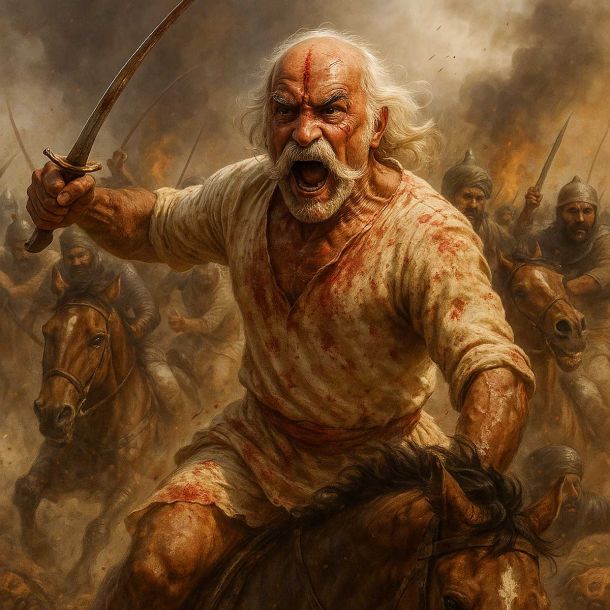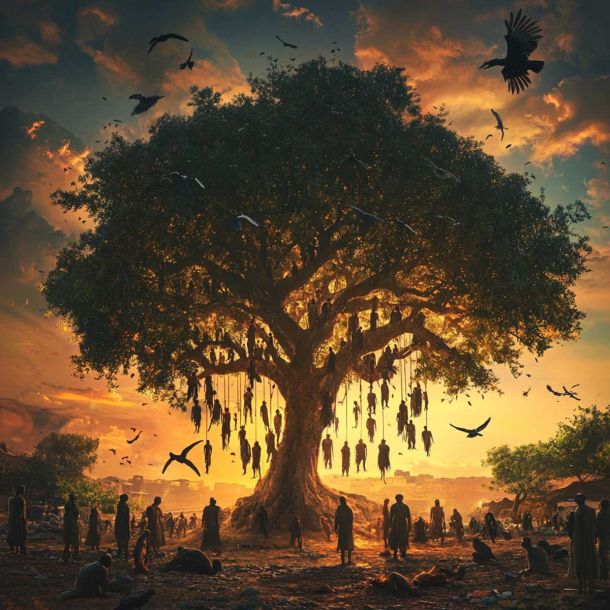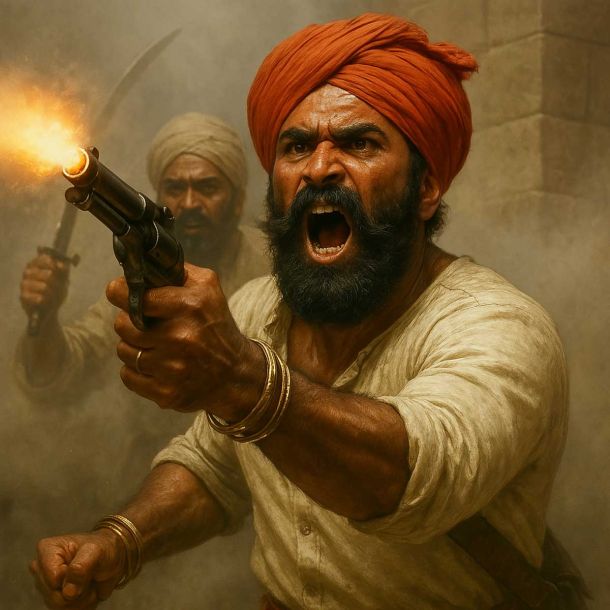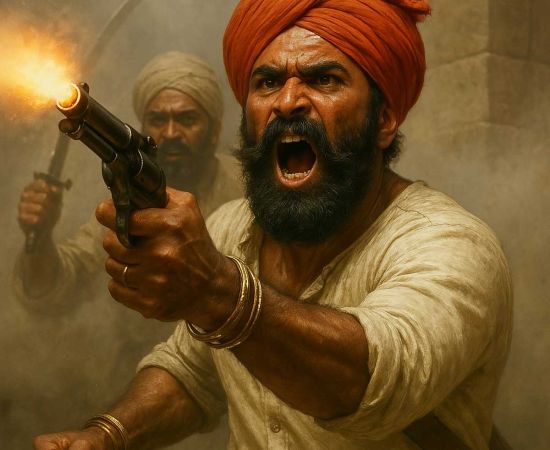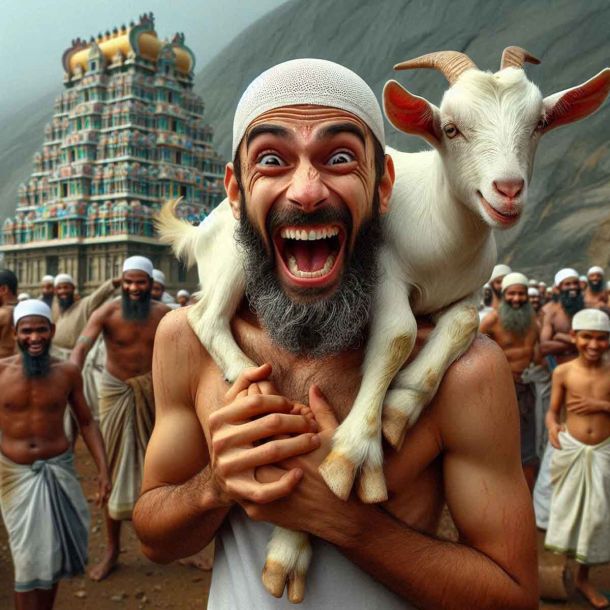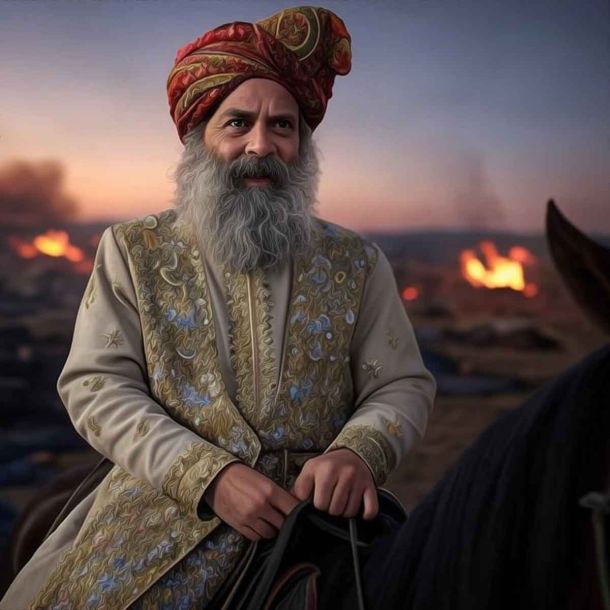MORE COVERAGE
Twitter Coverage
Satyaagrah
Written on
Satyaagrah
Written on
Satyaagrah
Written on
Satyaagrah
Written on
Satyaagrah
Written on
JOIN SATYAAGRAH SOCIAL MEDIA
"One death is a tragedy; one million is a statistic": Angry mob sets fire to the house of family accused of murdering Manohar Lal in Chamba who left his home on 6th June to return never again, he was in relationship with a Muslim girl, section 144 imposed
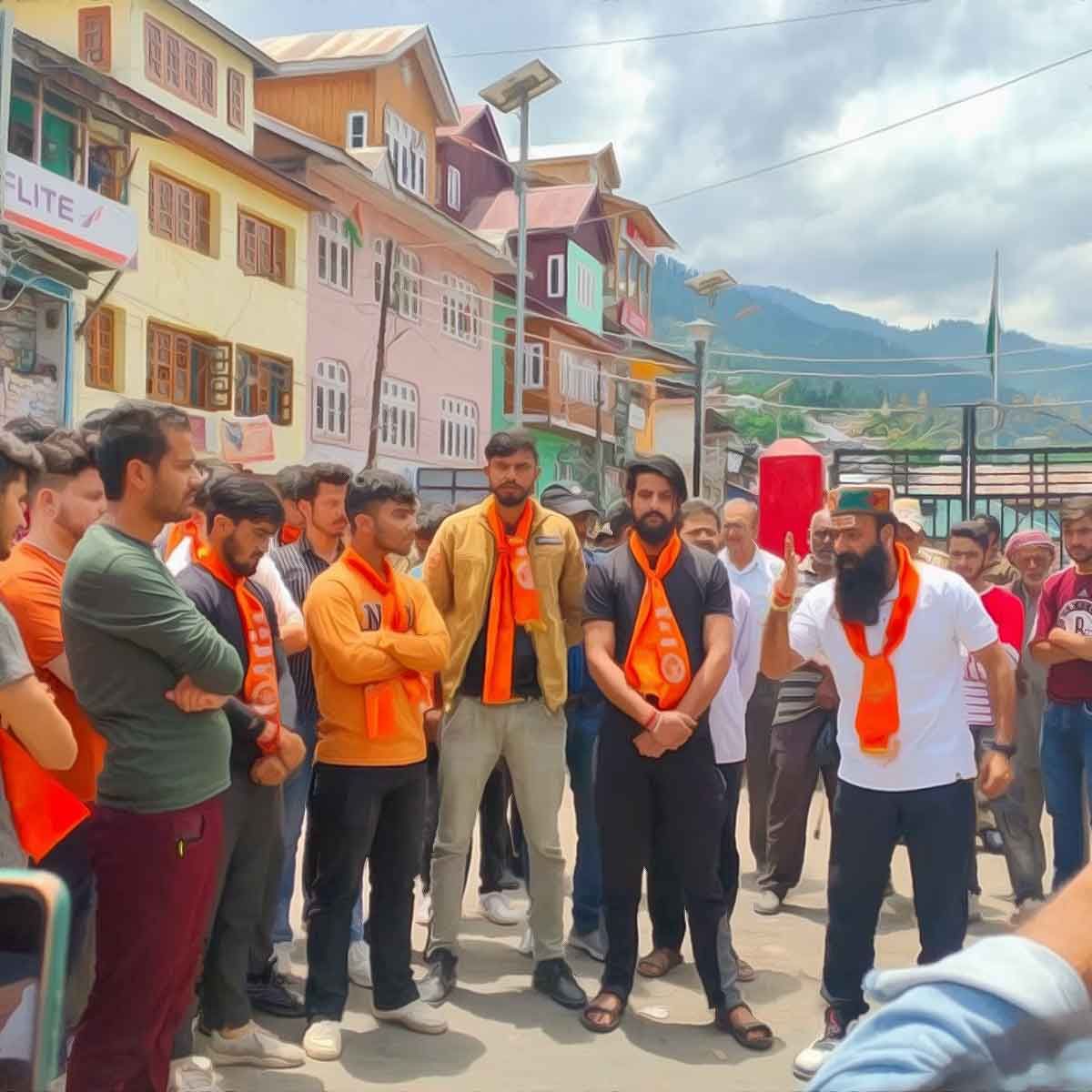
In recent times, the peaceful sanctity of the Himalayan hill states of Uttarakhand and Himachal Pradesh has been shattered by a disturbing trend: the insidious spread of Islamist radicalization. These regions, historically untouched by Islamic invaders who ravaged the rest of the country for centuries, are now grappling with the alarming consequences of this growing menace. In Uttarakhand, the situation has reached a breaking point, with locals taking to the streets in protest.
|
Meanwhile, signs indicate that Himachal Pradesh may be on a similar trajectory. The following account delves into the shocking incidents that have unfolded, leaving us in a state of disbelief and horror.
Uttarakhand's Breaking Point: Uttarakhand, known for its serene landscapes and spiritual significance, has been plunged into turmoil due to the encroachment of Islamist radicalization. In the picturesque town of Purola, locals are filled with anger and frustration as they witness their sacred land being infiltrated by extremist ideologies. The deeply unsettling events in this region have forced the community to rise up and voice their concerns.
Himachal Pradesh's Tragic Ordeal: While Uttarakhand grapples with the weight of this disheartening trend, its neighboring state of Himachal Pradesh has also fallen victim to the clutches of Islamist radicalization. The gruesome murder of 15-year-old Prachi Rana in Una last year sent shockwaves through the region, highlighting the alarming extent of the problem. Now, another horrifying incident has come to light, deepening the sense of disbelief and horror. Manohar Lal, a 21-year-old Hindu man from Bandal village in the Chamba district, met a tragic fate at the hands of his Muslim girlfriend's family.
|
Manohar Lal's Horrific End: Manohar Lal's disappearance on June 6, after leaving his home and heading towards his cowshed on the hilltop, left his family anxious and worried. It was later revealed that Manohar had been in a relationship with a Muslim girl named Rukhsana, a fact that her family vehemently opposed. Tragically, it is alleged that Manohar went to meet his lover, only to face a brutal and savage attack orchestrated by her family. He was beaten mercilessly with sticks before being lynched to death. The perpetrators then dismembered his body into eight parts, callously stuffing them into a gunny bag, which they heartlessly discarded in a drain.
The Grisly Discovery: Days later, the discovery of Manohar Lal's dismembered body shocked the region. Indian Reserve Battalion soldiers stumbled upon the bag containing his remains during a routine patrol on June 9. It was a chilling moment when the horrifying reality of the crime came to light. Local residents had noticed a foul smell and reported it to the police, leading to the grisly revelation.
|
The Search for Justice: Prompted by the discovery, the police initiated a thorough investigation, ultimately focusing on Manohar's Muslim girlfriend and her family as the prime suspects. Despite the religious dimension of the crime—Manohar being Hindu and the accused being Muslims—the Additional Superintendent of Police (ASP) vehemently denied any communal angle, emphasizing that the victim and accused had been involved in an affair. However, this denial fails to address the broader context of religious tensions and the sheer brutality of the crime.
Demand for Justice and Communal Divide: Hindu organizations have rallied behind Manohar's family, demanding swift justice and stringent action against the accused. It is disheartening to note that only Hindu outfits like Bajrang Dal and local BJP leaders have actively supported Manohar's grieving family. This stark divide in support reveals the communal undercurrents that complicate the pursuit of justice and healing in this case. While the search for truth continues, it is crucial to address these divisive forces and work towards unity and harmony.
The Outrage: Burning of the Accused's House: The heinous nature of the crime, coupled with the frustration and anger of the local community, culminated in an agitated mob setting fire to the accused's residence in the Salooni area. The incident unfolded on Thursday, June 15, following a demonstration outside the Kihar Police Station, where protestors raised slogans and demanded justice for the 21-year-old victim, Manohar Lal. The gravity of the crime incited strong public outrage, leading to the burning of the accused's house.
The Aftermath and Arrests: Following the arson attack, section 144 was imposed in the Kihar police station area to maintain law and order. The police swiftly arrested several individuals involved in the act of setting the accused's house ablaze. The legal proceedings surrounding this incident serve as a reminder of the complex aftermath of such a horrific crime.
Calls for National Investigation Agency (NIA) Involvement: Former Chief Minister of Himachal Pradesh, Jairam Thakur, has raised concerns about the case and called for the involvement of the National Investigation Agency (NIA) to ensure a thorough investigation. Thakur has brought to light unsettling allegations linking the accused to terrorist activities, including their involvement in a previous terror attack and suspicious financial transactions. These claims have further escalated the intensity and gravity of the case.
The unfolding events in Uttarakhand and Himachal Pradesh present a disturbing picture of the encroachment of Islamist radicalization in regions that had historically remained untouched by such influences. The denial of a communal angle by authorities, despite the religious dimensions of the crime, only serves to deepen the sense of disbelief and concern. It is imperative that justice is swiftly served, and efforts are made to address the underlying issues that contribute to the spread of radicalization. The tragic demise of Manohar Lal should serve as a wake-up call to protect the harmony and cultural diversity of these sacred lands.
|
The Narrative of Denying Communal Angle in Hate Crimes Against Hindus
In recent years, a disturbing trend has emerged in India, where crimes against Hindus perpetrated by individuals from other religious communities are often dismissed with the phrase "no communal angle." This denial, which is frequently used by politicians, police, bureaucracy, and the judiciary, undermines the gravity of these hate crimes and leaves the victims and their families in a state of disbelief and betrayal. This article delves into the pattern of denial and the implications it has for justice, communal harmony, and the growing awareness among Hindus.
The Pattern of Denial: Time and again, when heinous crimes occur involving a Hindu victim and a Muslim perpetrator, authorities rush to downplay the religious angle. Examples abound, such as the case of Prachi Rana, a minor girl brutally murdered by a stalker named Asif Mohammed. Despite the need for a comprehensive investigation, the police simply stated that there was "no religious angle" to the crime. Such blanket statements leave critical questions unanswered and breed disbelief among the affected communities.
|
Unanswered Questions: When crimes occur, it is essential to explore all possible angles, including religious motivations. In cases like Asif Mohammed's, did the police investigate the mosque he attended or the Islamic organizations he was associated with? Was there any inquiry into whether he had been influenced by sermons or teachings that dehumanize Hindus or propagate misogynistic views? These questions, left unanswered, contribute to the growing sense of betrayal and disbelief among Hindus.
The STSJ Murder and the Role of Authorities: Another incident that showcases the denial of communal angle is the murder of Umesh Kolhe, who was targeted by Islamists for expressing support for a BJP leader on social media. Initially, the Amravati police attempted to downplay the crime as "robbery related," but it was only after public pressure that the truth emerged. The case revealed the insidious nature of religiously motivated violence and the role authorities play in minimizing its significance.
|
Minimizing Communal Clashes: Instances of communal clashes, such as the violent attack on a Hindu marriage party in Mahoba, Uttar Pradesh, were casually dismissed by the police as "minor altercations." The brutal assault and molestation of the bride's family, coupled with casteist slurs, were trivialized, fueling disbelief among the affected community. Such reactions by law enforcement agencies contribute to a sense of injustice and erode faith in the system.
Selective Narratives and the Power of Media: The media also plays a significant role in shaping public perception. Cases involving Hindu victims often receive less attention compared to those where a Muslim is killed. This selective reporting reinforces a narrative that portrays Hindus as perpetrators and Muslims as victims, further fueling disbelief and disillusionment among Hindus.
The Need for Awareness and Justice: The murder of Manohar Lal, characterized by its brutal nature, points to a hate crime motivated by religious intolerance. Questions arise as to why the girl's family did not opt for peaceful resolution methods, but instead resorted to such extreme violence. The deep indoctrination that fuels such acts must be acknowledged and addressed. Denying the communal angle only perpetuates disbelief and hinders the pursuit of justice.
The State's Motivations: One possible explanation for the denial of communal angles in hate crimes against Hindus lies in the state's desire to avoid public scrutiny and pressure. Authorities fear the repercussions that acknowledging the true nature of these crimes may bring. They avoid confronting the Islamist indoctrination machinery and appease certain sections of society to maintain social order.
|
The Awakening of Hindus: The denial of communal angles has long been a tactic used by the state to prevent Hindus from asserting their rights and demanding justice. However, with the advent of social media and the democratization of discourse, ordinary Hindus are awakening to reality and refusing to be silenced. The dissemination of information and the amplification of voices challenging the narrative of denial are gradually changing the landscape.
The continued denial of communal angles in hate crimes against Hindus fosters disbelief, betrayal, and a sense of injustice. It obstructs the path to truth, hampers communal harmony, and erodes faith in the institutions responsible for upholding justice. Recognizing the communal dimensions of these crimes and addressing them with transparency and sensitivity is crucial for building trust, ensuring justice, and fostering a society free from religious prejudice. The awakening of Hindus and their determination to seek truth and demand accountability signal a shift in the status quo and offer hope for a more inclusive and just India.
|
 Support Us
Support Us
Satyagraha was born from the heart of our land, with an undying aim to unveil the true essence of Bharat. It seeks to illuminate the hidden tales of our valiant freedom fighters and the rich chronicles that haven't yet sung their complete melody in the mainstream.
While platforms like NDTV and 'The Wire' effortlessly garner funds under the banner of safeguarding democracy, we at Satyagraha walk a different path. Our strength and resonance come from you. In this journey to weave a stronger Bharat, every little contribution amplifies our voice. Let's come together, contribute as you can, and champion the true spirit of our nation.
 |  |  |
| ICICI Bank of Satyaagrah | Razorpay Bank of Satyaagrah | PayPal Bank of Satyaagrah - For International Payments |
If all above doesn't work, then try the LINK below:
Please share the article on other platforms
DISCLAIMER: The author is solely responsible for the views expressed in this article. The author carries the responsibility for citing and/or licensing of images utilized within the text. The website also frequently uses non-commercial images for representational purposes only in line with the article. We are not responsible for the authenticity of such images. If some images have a copyright issue, we request the person/entity to contact us at This email address is being protected from spambots. You need JavaScript enabled to view it. and we will take the necessary actions to resolve the issue.
Related Articles
- In a parallel to the Shradha Walkar case, this time in Jharkhand, follows same disturbing Abdul pattern, Ehsan Mirdaha, posing as Badal, lured the tribal Hindu girl Archana, leading to her rape, murder, and dismemberment into several pieces, arrested
- In a significant verdict, Delhi's Tis Hazari Court sentenced Akbar Ali, Shehnaz Begum, & Mohammad Salim to life for the murder of Ankit Saxena, with each being fined Rs 50,000; were convicted by the court on Dec 23, 2023, almost 6 years after the incident
- 23 Jan to 29 Jan - 2022 - Hindus under attack: Bulletin roundup of persecution, discrimination, and hate crimes against Hindus
- “You want to kill me. What is the reason?”: Bharatiya Janata Party MP from Bhopal, Sadhvi Pragya Singh Thakur receives death threat from the gang of Iqbal Kaskar, brother of underworld don and terrorist Dawood Ibrahim, case registered in Bhopal
- "And in my last breath, I saw him dancing": A 16-year-old boy's merciless stabbing of another in Delhi, captured on CCTV, with 60 blows in a deranged frenzy, this tragic tale of youth violence unfolds, DCPCR intervenes, hinting at deeper societal failures
- More videos of Maulana Usmani has surfaced showing how he openly called for violence and said, ‘CDS Bipin Rawat’s death was Allah’s work, Muslims should be prepared to kill or die’
- "Human misery must somewhere have a stop; there is no wind that always blows a storm": Jihad at work again in Somalia - 2 months after president vowed ‘all-out war’ against jihadis, jihadis murder 100 people in twin bombings targeting education ministry
- ‘Gustakh-e-Rasool ki ek hee saza, Sar tan se juda. Oh Narendra Modi, hope knife reaches your neck as well’: Hindu tailor Kanhaiya Lal beheaded in broad daylight in Udaipur by two Mohammad Riaz and his friend Mohammad for post supporting Nupur Sharma
- ‘La ilaha illallah muhammadur rasulullah”: Muslim BTech student, Lareb Hashmi, attacks a Hindu bus conductor with cleaver over ‘blasphemy’, shouts "We are ready to die for Prophet", inciting public uproar and leading to a dramatic police encounter, arrest
- Hindu youth Vijaya Kamble stabbed to death for being in a relationship with a Muslim girl, the elder sister of Shahabuddin: Shahabuddin and Nawaz attacked the boy with iron rod, arrested, tension grips Kalaburagi
- In yet another horrific incident of grooming jihad Mohammad Yasin, a supplier of ayurvedic medicine killed his second wife ‘Zara’ earlier a Hindu girl 'Shiva Vishwakarma': Left their three-year-old girl child outside the house
- In the latest development in Kishan Bharwad murder case, Ahmedabad police have arrested two suspects, Hindu organizations have called for a bandh protesting against the murder
- "Karma has no menu. You get served what you deserve": Sanjeev Jeeva, a dreaded gangster in Western Uttar Pradesh, was shot dead on Wednesday, Jeeva was a close aide of Mukhtar Ansari and was a co-accused in the murder case of BJP MLA Krishnanand Rai
- "या अल्लाह": Sara Sharif, a 10-year-old from Woking, found dead with severe injuries; her father, Urfan Sharif, confessed to beating her but blamed stepmother Beinash Batool, as forensic evidence and messages revealed abuse, triggering trial at Old Bailey
- In the interpretation of Islam, any pictorial representation of Prophet Muhammad is an anathema, something that is strictly prohibited and even regarded as ‘blasphemy’ and calls for beheading
